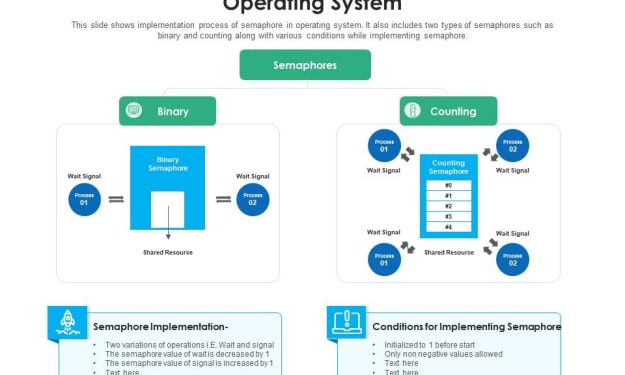Adapting to the New Normal: How Indian Artists are Beating Corona
The COVID-19 pandemic disrupted lives and industries worldwide, but it also sparked a wave of creativity and resilience among Indian artists.

https://blog.delivermytune.com/indian-artists-beating-corona-with-funny-creatives/
The COVID-19 pandemic disrupted lives and industries worldwide, but it also sparked a wave of creativity and resilience among Indian artists. The sudden halt in live performances, gallery exhibitions, and community events posed significant challenges, yet these artists found innovative ways to adapt. This article explores the various ways in which Indian artists have embraced the new normal, using their talents to bring hope and inspiration during challenging times.
From musicians to visual artists, performers to writers, the Indian art scene has shown remarkable adaptability and innovation. As traditional avenues closed, artists turned to digital platforms, collaborative projects, and community-driven initiatives to sustain their work and support each other. Through these efforts, they have managed to keep their art alive and even expand their reach to new audiences. Let’s delve into the inspiring stories and strategies that have defined this period of artistic resilience.
Embracing Digital Platforms
The shift to digital platforms was a necessity and an opportunity for Indian artists. By moving their performances and exhibitions online, they could continue to engage with audiences and maintain their presence.
Online Music and Dance Performances:
Musicians and dancers quickly adapted to live streaming platforms such as Instagram, YouTube, and Facebook. These virtual performances allowed artists to reach their audiences, provide entertainment, and even raise funds for COVID-19 relief efforts. For example, celebrated classical musicians like Zakir Hussain and Shubha Mudgal hosted live concerts from their homes, bringing solace to fans worldwide. Classical dance academies also offered virtual classes, ensuring students could continue their training despite the lockdown.
Platforms like Paytm Insider and BookMyShow shifted their focus to digital events, providing artists with a structured way to monetize their performances. These platforms offered ticketed events where audiences could pay to watch exclusive performances, helping artists generate income during the lockdown.
Virtual Theatre and Film Screenings:
Theatre groups and filmmakers also embraced the digital shift. The National School of Drama and other theatre companies organized virtual theatre festivals, streaming plays live to audiences across the globe. This approach democratized access to theatre, allowing people from different regions to enjoy performances they might not have seen otherwise.
Filmmakers released their works on platforms like YouTube, Vimeo, and even Netflix. The short film "Home Stories," for instance, is a collection of short films shot during the lockdown, reflecting on the various facets of life during the pandemic. These digital releases reached wider audiences and maintained the momentum of the film industry.
Virtual Art Exhibitions:
Visual artists transitioned to virtual galleries and online exhibitions. Institutions like the National Gallery of Modern Art and private galleries such as Emami Art hosted digital exhibitions, allowing art lovers to view and purchase artworks online. These virtual galleries not only provided a lifeline for artists but also democratized access to art, reaching audiences far beyond physical locations.
Platforms like Instagram became crucial for visual artists to showcase their work. Artists like Rouble Nagi used Instagram Live to conduct virtual tours of their studios, engage with followers, and even auction their artworks. These efforts helped artists stay connected with their audience and maintain their livelihood.
Innovative Collaborations
Collaboration took on a new dimension during the pandemic, with artists leveraging technology to work together remotely. These collaborative efforts resulted in innovative and inspiring projects.
Remote Music Collaborations:
Musicians collaborated across borders using digital tools like BandLab and Soundtrap. These platforms facilitated seamless recording and production of music without the need for physical meetings. One notable example is the song "United by Hope," which brought together over 40 musicians from different parts of India. The song, composed and recorded entirely online, became a symbol of unity and resilience during the pandemic.
Similarly, the "Stay at Home Jam" project featured collaborations between Indian musicians and international artists, producing new tracks that showcased a blend of diverse styles and influences. These projects highlighted the power of music to bring people together, even in times of physical separation.
Collaborative Art Projects:
Visual artists and designers engaged in collaborative projects that addressed themes of isolation, resilience, and hope. These projects often involved creating digital art installations or murals that reflected the shared experience of the pandemic. Platforms like Google Arts & Culture facilitated these initiatives, allowing artists to work together in real-time despite being miles apart.
An example is the "Artists Together" project, where artists from different countries collaborated on digital murals that depicted the global impact of the pandemic. These collaborative efforts not only produced meaningful art but also fostered a sense of global solidarity.
Literary Collaborations:
Writers and poets participated in online anthologies and collaborative writing projects. These initiatives provided a platform for creative expression and allowed writers to share their experiences and reflections on the pandemic. Online writing workshops and virtual book launches also became popular, ensuring that literary communities remained vibrant and connected.
The "Lockdown Lit" anthology, for instance, features contributions from Indian writers across genres. The anthology captures the diverse experiences and emotions of the lockdown, offering readers a sense of connection and solidarity. Online platforms like Wattpad and Medium facilitated these collaborative projects, allowing writers to reach a global audience.
Community Initiatives
Beyond their own practices, many Indian artists took on roles as community leaders, using their influence to support others. Various initiatives emerged to provide financial, emotional, and professional assistance to artists in need.
Fundraisers and Charity Events:
Artists organized virtual fundraisers and charity events to support those hardest hit by the pandemic. These events ranged from live-streamed concerts to online art auctions, with proceeds going to various relief efforts. For example, the "Artists for Artists" initiative raised funds to support out-of-work performers and technicians in the entertainment industry.
Another notable effort was the "Concert for India," a virtual concert organized by Indian musicians to raise funds for COVID-19 relief. The event featured performances by prominent artists and received widespread support from audiences around the world.
Mutual Aid Networks:
Mutual aid networks sprang up within artistic communities, providing financial and emotional support to those in need. These networks often operated through social media, with artists sharing resources and offering help to one another. Platforms like WhatsApp and Telegram were used to coordinate efforts and ensure that support reached those who needed it most.
The "Artists Mutual Aid" group on Facebook, for instance, became a crucial platform for artists to seek and offer support. Members shared information about grants, job opportunities, and mental health resources, fostering a sense of solidarity and mutual aid.
Educational Initiatives:
Recognizing the impact of the pandemic on education, many artists offered free or low-cost workshops and classes. These educational initiatives not only helped sustain the artists' income but also provided valuable opportunities for learners of all ages to engage with the arts. Online platforms like Zoom and Google Meet became classrooms for music lessons, art workshops, and theatre rehearsals.
Organizations like Ranga Shankara Theatre in Bangalore launched online programs to educate and engage young artists. These initiatives helped maintain a sense of continuity and community, even in the absence of physical gatherings.
Personal Journeys
Behind every artistic endeavor during the pandemic are personal stories of resilience and creativity. These individual journeys highlight the diverse ways in which Indian artists have navigated the challenges posed by COVID-19.
A Painter’s Journey:
Take the story of Ramesh, a painter from Mumbai who found inspiration in the solitude of lockdown. Isolated from his usual social interactions, Ramesh began a series of paintings exploring themes of loneliness and human connection. His work, shared on social media, resonated with many and led to virtual exhibitions and increased recognition.
Ramesh’s paintings, which often depict solitary figures in vibrant, dreamlike settings, have struck a chord with audiences worldwide. His online presence has grown significantly, and he has even sold several pieces through virtual galleries.
A Musician’s Resilience:
Similarly, Priya, a classical musician, faced the abrupt cancellation of her concert tour. Undeterred, she transformed her living room into a mini recording studio and started a YouTube channel. Her daily live sessions, where she performed and interacted with viewers, quickly gained popularity, providing a sense of community and continuity for her fans.
Priya’s innovative approach to maintaining her musical career has inspired many aspiring musicians. Her YouTube channel has amassed thousands of subscribers, and she continues to use the platform to share her music and connect with fans.
A Theatre Artist’s Adaptation:
For theatre artist Rahul, the pandemic meant a complete halt to live performances. He pivoted by creating short, one-man shows tailored for online streaming. These performances, shared on platforms like Vimeo, reached audiences far and wide, proving that the essence of theatre could transcend physical spaces.
Rahul’s online performances have been praised for their creativity and emotional depth. By adapting his craft to the digital realm, he has managed to keep his passion for theatre alive and bring joy to audiences during challenging times.
Conclusion:
The resilience and creativity displayed by Indian artists beating corona are truly inspiring. By embracing digital platforms, fostering collaboration, and supporting their communities, they have managed to keep their art alive and support one another through these challenging times. Their innovative approaches to overcoming obstacles serve as a testament to the enduring power of art in the face of adversity.
As we look to the future, the lessons learned during the pandemic will continue to shape the artistic landscape. The digital transformation of the arts, the importance of collaboration, and the strength of community support will remain central to the success and sustainability of the creative sector. Indian artists have shown that even in the most difficult circumstances, creativity and resilience can lead to new opportunities and meaningful connections.
About the Creator
Enjoyed the story? Support the Creator.
Subscribe for free to receive all their stories in your feed. You could also pledge your support or give them a one-off tip, letting them know you appreciate their work.






Comments
There are no comments for this story
Be the first to respond and start the conversation.